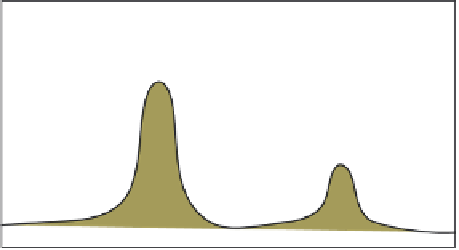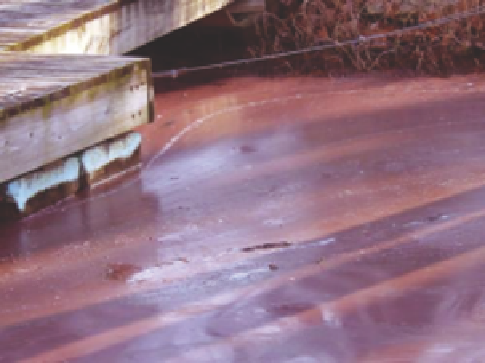Environmental Engineering Reference
In-Depth Information
(particularly Cyanobacteria and green algae), which are less dense and provide increased frictional
resistance (Wetzel 2001).
15.3.1.1.5 Seasonal Succession and Spatial Distribution
Seasonal variations in phytoplankton concentrations occur due to a variety of factors, including
light, water temperatures and density stratiication, turbulent mixing, predation, nutrient distribu-
tions, and others, with the result that the species distribution of phytoplankton is not constant either
temporally or spatially (Figure 15.15).
Seasonal variations often occur in types and population densities of phytoplankton. A general
idealized trend in seasonal variations for temperate lakes is illustrated in Figure 15.16. Planktonic
diatoms often produce spring and fall blooms in temperate lakes and oceans and summer blooms
at higher altitudes. During spring with the onset of stratiication, ample nutrients are trapped in the
surface layer and ample light and low populations of herbivores (e.g., zooplankton). With relatively
low temperatures, the density and viscosity of water are greater and there is still substantial vertical
Green
algae
Blue
greens
Diatoms
Diatoms
Jan
Feb
Mar
Apr
May
Sep
Oct
Nov
Dec
Jul
Aug
Jun
FIGURE 15.15
Typical seasonal succession patterns of phytoplankton populations. (From Water on the
Web, Monitoring Minnesota lakes on the Internet and training water science technicians for the future—A
national on-line curriculum using advanced technologies and real-time data, University of Minnesota-Duluth,
Duluth, MN, 2004, Available at http://WaterOntheWeb.org.)
FIGURE 15.16
Cyanobacteria (
Planktothrix rubescens
) on the surface of a Missouri lake. (From Lakes of
Missouri Volunteer Program. With permission.)



Search WWH ::

Custom Search